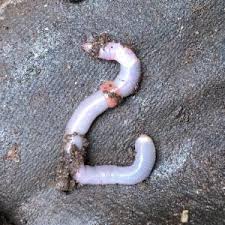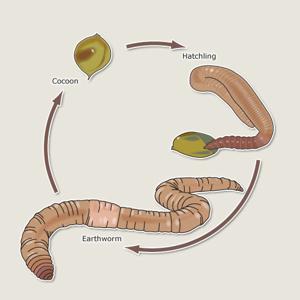Octolasion cyaneum: Difference between revisions
| Line 32: | Line 32: | ||
==Range== | ==Range== | ||
O. cyaneum is a temperate endogenic species, meaning that they are soil dwelling species that live and feed within the soil rather than above, found throughout Europe, America, Australia, northern India, and Pakistan [low | O. cyaneum is a temperate endogenic species, meaning that they are soil dwelling species that live and feed within the soil rather than above, found throughout Europe, America, Australia, northern India, and Pakistan <ref name= “Kliszcz”>Kliszcz, A., and J. Puła. 2020. The change of pH value and Octolasion cyaneum Savigny earthworms’ activity under stubble crops after spring triticale continuous cultivation. Soil Systems 4(3):39. https://doi.org/10.3390/soilsystems4030039 </ref>[low]. Its widespread geographical distribution predisposes them as a subject for ecological assessment and chronic toxicity studies [low]. They can be found under stones, burrowing tree trunks, and near riverbeds <ref name= “Muslim”>Muslim, T. M. 2024. Morphological and environmental conditions of new record [[earthworm]] Octolasion cyaneum in Al-Diwaniyah City/Iraq. Asian Journal of Biological Sciences 17:582–586. https://doi.org/10.3923/ajbs.2024.582.586 </ref>. | ||
==Ecology== | ==Ecology== | ||
Revision as of 15:15, 29 April 2025
Octolasion cyaneum, a blue gray worm considered an invasive species in the U.S., is in the family Lumbricidae that are the dominant earthworms of pastures and croplands of Europe [1]. They are large sluggish species mostly found in the topsoil of low-fertility pastures on many soil types [.]. They originated in Europe and were brought to New Zealand through either ballast ships or imported plants by early European settlers [.]. O. cyaneum feed on fresh organic matter, microorganisms, and large quantities of soil and accompanied organic residues [.].
 | |
| Kingdom: | Animalia |
|---|---|
| Phylum: | Annelida |
| Class: | Citellata |
| Order: | Crassiclitellata |
| Family: | Lumbricidae |
| Genus: | Octolasion |
| Species: | Octolasion cyaneum |
Range
O. cyaneum is a temperate endogenic species, meaning that they are soil dwelling species that live and feed within the soil rather than above, found throughout Europe, America, Australia, northern India, and Pakistan [2][low]. Its widespread geographical distribution predisposes them as a subject for ecological assessment and chronic toxicity studies [low]. They can be found under stones, burrowing tree trunks, and near riverbeds [1].
Ecology
Like all earthworms, O. cyaneum increases the concentration of nitrogen in the soil and increases potassium through the production of vermicompost, making the soil fertile and rich in organic matter [1]. They can be used as bioindicators of soil management because they are sensitive to both chemical and physical soil parameters [pao in 1]. This can be observed through their cocoon numbers and biomass because they reflect both natural soil parameters and agricultural practices [chris].
Behavior
Life Cycle

O. cyaneum are hermaphrodites, possessing both male and female reproductive organs [phil]. The common mode of reproduction is parthenogenesis that results in the production of genetically homogeneous clones in populations founded on one or only few individuals [.]. They produce either one hatching (singleton) or two hatchings (twins) per cocoon, which are rare but not impossible [.]. The mature O. cyaneum display a citellum on the front portion of the body that is used for reproduction [phil]. O. cyaneum prefer environments that have high values of porosity and C content, soils with a pH of 5.5-8, and moist soil for development, buckwheat rhizosphere being the best [kli][1].
References
- ↑ 1.0 1.1 1.2 1.3 Muslim, T. M. 2024. Morphological and environmental conditions of new record earthworm Octolasion cyaneum in Al-Diwaniyah City/Iraq. Asian Journal of Biological Sciences 17:582–586. https://doi.org/10.3923/ajbs.2024.582.586
- ↑ Kliszcz, A., and J. Puła. 2020. The change of pH value and Octolasion cyaneum Savigny earthworms’ activity under stubble crops after spring triticale continuous cultivation. Soil Systems 4(3):39. https://doi.org/10.3390/soilsystems4030039